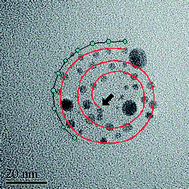Synthesis of inorganic nanomaterials mediated by proteinassemblies†
Abstract
Biological materials naturally display a variety of functional structures highly organized at the nanoscale. Various bioassemblies have been shown to template complex, multidimensional inorganic nanoarchitectures that are typically not available by conventional synthetic methodologies. In addition to the various naturally occurring templates, the powerful techniques developed by life sciences are an interesting tool for engineering approaches towards material science. Besides a structural and morphological control during synthesis, biotemplating procedures may add another dimension to inorganic materials such as biofunctionality (e.g., motility functions). This overview is focussed on recent advances in the fabrication of inorganic nanomaterials taking advantage of

- This article is part of the themed collection: Biology in the service of materials

 Please wait while we load your content...
Please wait while we load your content...